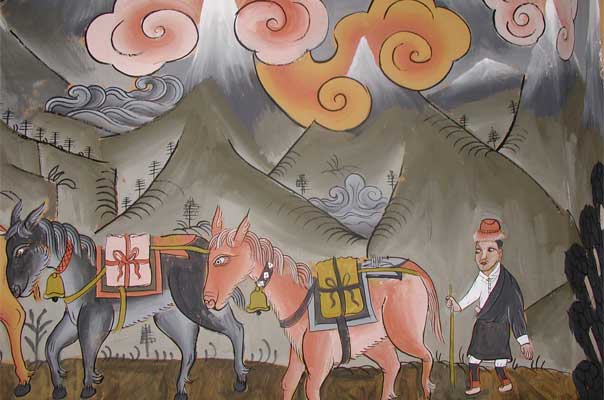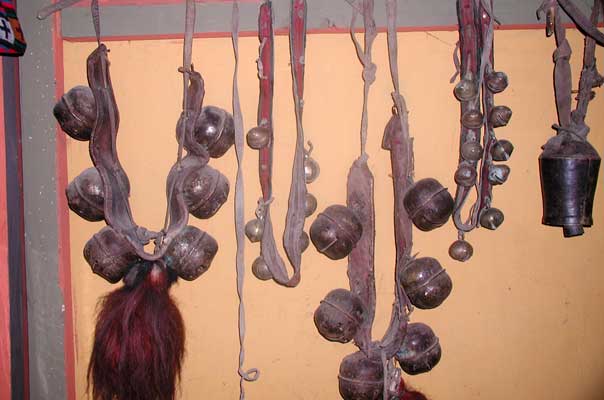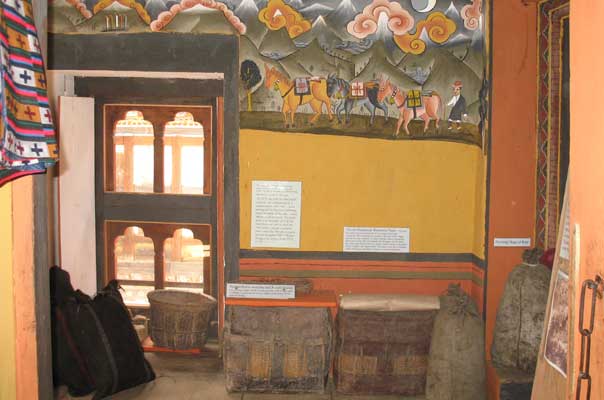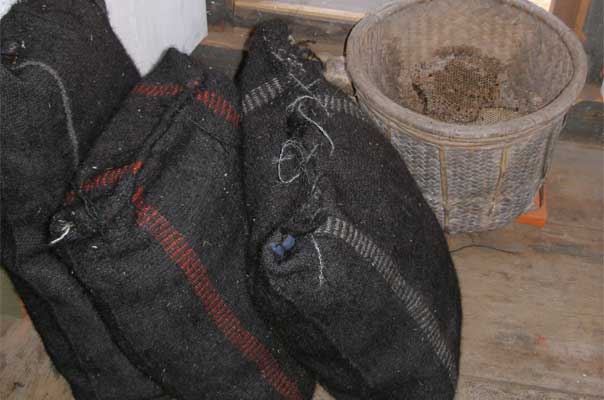Trade
Bhutan was largely a subsistence society, until it was linked by motorable roads to the Indian market in the 1960s. Most of people's daily requirements could be met through local resources as well as a system of bartering within the country. But one essential food ingredient, salt, had to be imported from Tibet and India on a regular basis. Right into the late 1950s Ogyen Choling trade caravans went to Tibet and India. Trade merchants made at least one or more trading trips each year on behalf of the Ogyen Choling household. While salt was the most important commodity imported, exports from Ogyen Choling's estates included rice, tsut (madder), textiles and handmade paper.
Trading with India and Tibet would have been almost impossible without the mules, horses and yak. While the use of yak as pack animals was confined to the higher elevations it was the horses and mules which travelled long distances providing vital transport. The mule trains were magnificently showy and impressively noisy. Yet, the transport services by mules, ponies and yak were hardly adequate to carry all the goods and merchandise, and people had to bear the additional burden of portage. There was an established system of portage obligation as a form of tax to the government and to the aristocracy. People had to carry all sorts of items to and from the trading centres as well as carrying loads back and forth to designated points within the country. Every tax paying household had to have a set of equipment for this purpose. The T-shaped stick and the bamboo rope for strapping the luggage are included among the exhibits under this theme.




